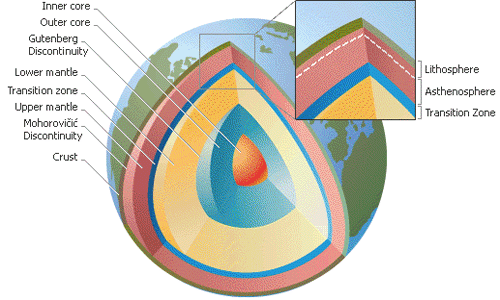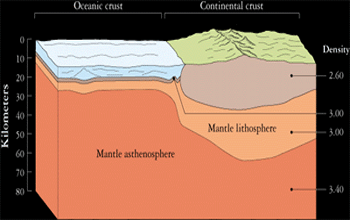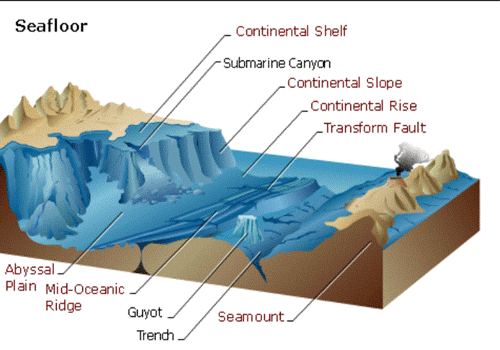Where do Diamonds come from?
Experiments and the high density of diamonds tells us that they take shape at very high pressures. In nature this means that diamonds are created by geologic processes at great depth within Earth, usually more than 150 kilometers down, in a region beneath the crust known as the mantle.
This figure shows the interior structure of Earth. The three concentric layers -- the core, mantle, and crust -- created within a few hundred million years of Earth's coalescence 4.5 billion years ago. The core is mainly an iron-nickel alloy and makes up a large fraction of the mass of Earth. The vast mantle is sandwiched between the core and the thin crust and is composed mainly of magnesium and iron silicate minerals. Our planet's crust is a thin, stony skin. Diamonds can form in a large amount of Earth's interior but not near its surface, where graphite is the stable form of carbon. Certainly, diamonds only survive at Earth's surface because great heat is required to break down the diamond structure.

The upper layer is slightly plastic, which allows it to circulate slowly in a creeping, convective flow that helps drive the surface motion of Earth known as "plate tectonics."

The cross section shown here provides a closer look at Earth's crust and underlying layer. The crust can be divided into ocean basins, underlined by a thin layer of dense, basaltic rock, and continents, formed from much thicker but less-dense layer of granitic rocks. Just below the crust is the portion of the mantle called the lithosphere, which is severe and acts like rock. Below this is the asthenosphere, a more plastic, smooth region that enables the overlying crustal plates to move in what is known as plate tectonics.

The plot of pressure and temperature shows the conditions at either diamond or graphite exist. The common conditions present in the Earth are described by curved lines called geotherms. Note that there are two geotherms: since the continental crust is old and thick, conditions are somewhat colder in and beneath it than beneath the much younger ocean basins. Diamonds can form at depths as shallow as 150 kilometers beneath the continental crust, though beneath oceans they need depths of at least 200 kilometers, as shown by the diamond boundary on the cross-section.
<< Back | Next >>